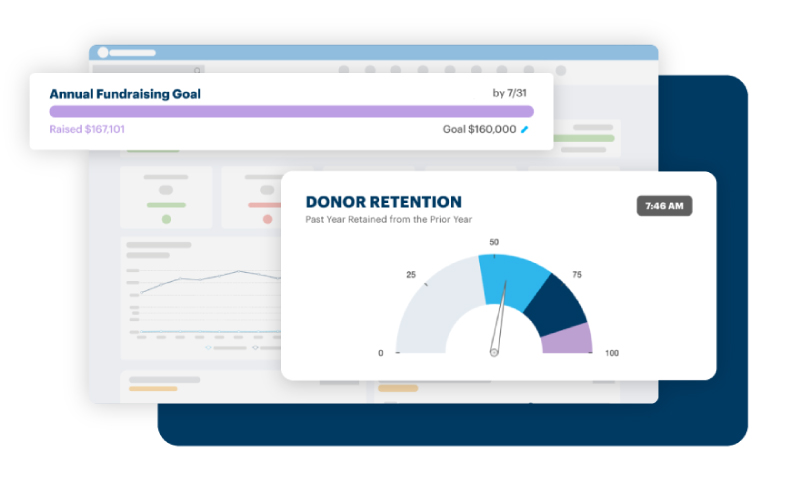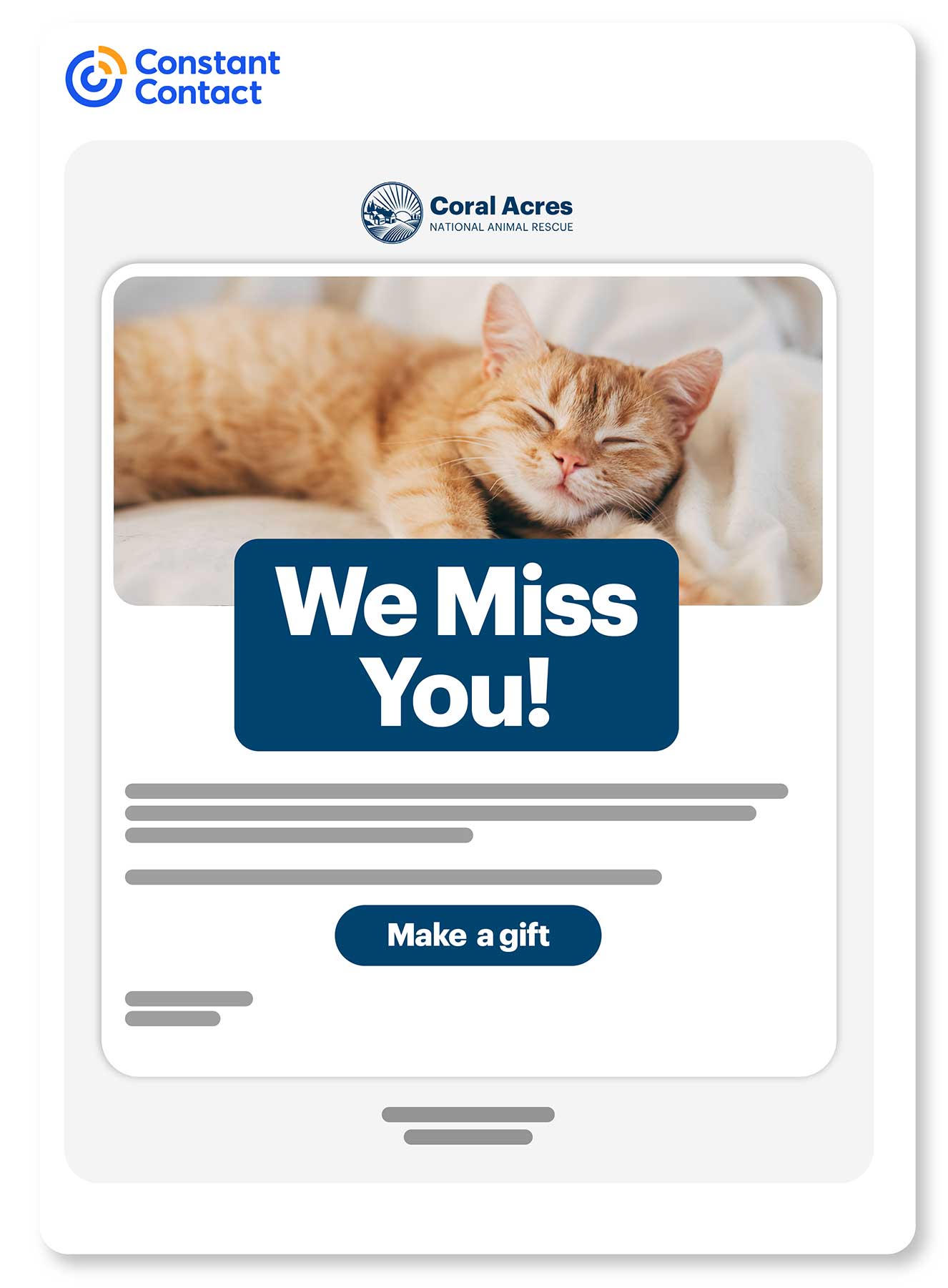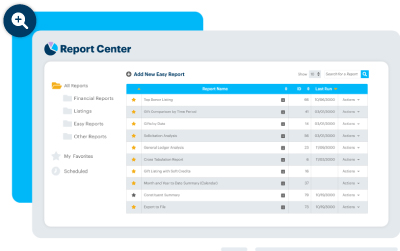Nonprofit Technology & Fundraising Blog
Subscribe to our mailing list

June 17, 2025 | Donor Engagement, Fundraising Operations, Planning
A strong nonprofit strategic plan starts long before it’s written. The preparation phase shapes what goes into your plan and how well your team will embrace and implement it. From assessing your organization’s readiness to engaging the right people, this stage lays the groundwork for long-term success.
A nonprofit strategic plan starts with more than enthusiasm—it starts with insight. While 90% of nonprofits collect data, only 5% use it to guide every decision. Turning that data into action begins with thoughtful preparation: clarifying priorities, building team alignment, and understanding what your organization truly needs to grow.
This is the second post in our four-part Strategic Planning for Nonprofits series. If your team is gearing up to create a strategic plan, this guide will walk you through the critical preparation steps—from assessing readiness to engaging stakeholders and outlining a realistic process that aligns with your team’s capacity. Before you draft your goals, it’s essential to start with clarity and collaboration.
Before launching a nonprofit strategic plan, take a step back and evaluate your organization’s capacity and culture. Effective planning depends on both a clear process and a culture of openness, learning, and collaboration.
Ask these key questions:
Pro tip: Readiness doesn’t mean everything is perfect. It means your organization is willing to learn, adapt, and focus. Planning is most effective when your team has a shared understanding of both your strengths and areas for growth. To lead with insight, check out DonorPerfect’s How to Use Data to Manage Your Nonprofit e-book.
Here are a few common signs that it’s time to begin your nonprofit strategic planning process:
DonorPerfect dashboards help you visualize key readiness indicators like donor engagement and campaign performance, so your nonprofit strategic planning process starts with real data, not guesswork.

Strategic planning is most effective when it’s inclusive. To build alignment from the start, invite insights from voices across your organization:
Early engagement builds trust, surfaces key insights, and ensures smoother implementation down the road.
Pro tip: Use stakeholder surveys or facilitated interviews to gather honest feedback in a structured way.
With DonorPerfect’s built-in Constant Contact integration, you can send targeted stakeholder surveys that improve response rates and help you build alignment before your nonprofit strategic planning process begins.

The best plans are grounded in data. A discovery phase helps you understand where your organization stands today and what factors should shape your strategic direction.
Gather both internal and external data:
Internal:
External:
Pro tip: Use historical data to spot trends, not just current snapshots. A three-year view often tells a more meaningful story.
DonorPerfect’s reports on retention and engagement let you analyze what’s working—and what’s not—so your nonprofit strategic plan is grounded in evidence, not assumptions.

Your planning process should reflect your organizational culture and capacity. Ask:
While we’ll cover action and implementation in Blog 3, now is the time to establish the structure that will support your future strategic planning process. Consider this strategic planning process structure:
Pro tip: Clarifying scope, responsibilities, and decision-making authority early on helps your team avoid confusion and stay focused as the plan takes shape.
Time is a common barrier, but planning can still move forward with the right structure. Building a realistic strategic planning timeline for nonprofits means balancing data collection, team bandwidth, and mission-critical programs.
Preparing your strategic planning timeline will depend on how long it will take you to gather information, organize stakeholders, and implement your team’s vision for this process. Also, be sure to plan around major events and ensure that your programs and services are not neglected.
The length of the strategic planning process will vary by organization, but here is a sample 3-month (one quarter in two-week sprints) timeline:
During your planning phase, clarity matters. DonorPerfect’s custom fields and dynamic reports help you track strategic inputs like stakeholder feedback, program trends, or fundraising patterns, so your planning team can make informed, timely decisions.

Before setting goals, ensure your team is aligned on what matters most over the next few years. This step turns your nonprofit strategic planning process into a collaborative effort rooted in shared understanding.
When you invest in preparation, you:
Pro tip: Listen early and often. The more perspectives you gather upfront, the more aligned and actionable your plan will be.
Preparation is the first—and most important—step in creating a strategic plan that drives real results. With the right people, the right data, and the right mindset, your organization can lead with clarity and confidence. Learn how DonorPerfect can help your team succeed with fundraising tools while preparing your next strategic plan.
Want to see what all this preparation leads to? In the next post, we’ll show you how to build a nonprofit strategic plan that turns big-picture goals into focused action steps.
This post is Part 2 of our Strategic Planning for Nonprofits series. Missed Part 1? Read Why Strategic Planning Matters for Nonprofits to get started.
Coming up: How to create and execute a nonprofit strategic plan that turns big-picture goals into clear priorities and measurable results.
1. How do we choose the right facilitator for our strategic planning process?
2. Should we use a template for our nonprofit strategic plan?
3. What if we don’t have time to do a full strategic planning process?
4. What’s the role of data in preparing for strategic planning?
Follow us on social!